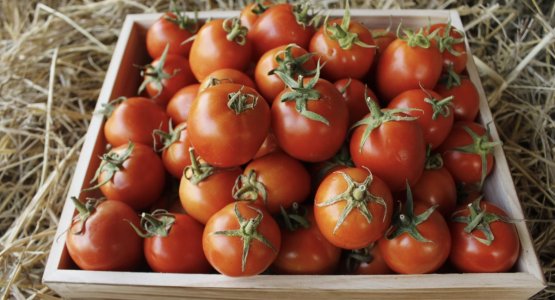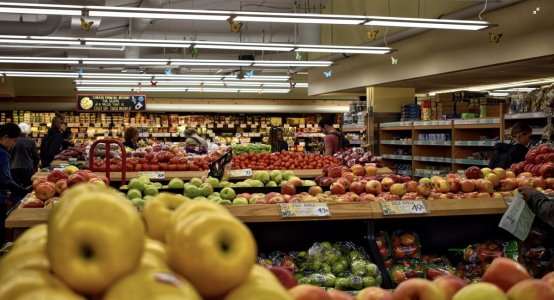New US tariff on Mexican tomatoes marks shift toward domestic production
- Replies 0
You may not have noticed yet, but one everyday kitchen staple could soon cost more than you’d expect.
A recent move by the government is already rippling across stores and supply chains nationwide.
This isn’t just about produce—it could impact wallets, jobs, and even trade relationships.
If you enjoy fresh ingredients year-round, what’s happening now could change the way you shop.
The United States has placed a 17% duty on most fresh tomatoes imported from Mexico.
This came after negotiations collapsed over a deal aimed at keeping prices stable.
The Department of Commerce withdrew from the Tomato Suspension Agreement, a 2019 agreement with Mexico that set minimum pricing rules for tomato exports.
That agreement had long helped avoid tariffs, but the US government said it had received an overwhelming number of complaints from domestic tomato growers asking for stronger protections.

Supporters of the new duty believe it will help revive American tomato production, which has been declining for decades.
According to the Florida Tomato Exchange, Mexico now supplies around 70% of the fresh tomatoes consumed in the US—up from just 30% twenty years ago.
Robert Guenther, Executive Vice President of the trade group, called the 17% import duty “an enormous victory for American tomato farmers and American agriculture.”
But not everyone agrees with the decision. Critics argue that this will significantly raise prices for US consumers.
Also read: Stop wasting money today: The grocery items that are draining your wallet revealed!
Tim Richards, a professor at Arizona State University's Morrison School of Agribusiness, said retail tomato prices are expected to jump by roughly 8.5%.
Jacob Jensen, a trade policy analyst at the American Action Forum, shared a similar outlook, noting that reduced supply options will make it difficult to replace Mexican-grown varieties.
Jensen added that areas heavily dependent on Mexican imports could see price increases closer to 10%, while other regions may see about a 6% rise.
Lance Jungmeyer, president of the Fresh Produce Association of the Americas, said the outcome will be that “American consumers will have to pay a tomato tax, or duty, for a reduced selection of the tomatoes they prefer, such as tomatoes on the vine, grape tomatoes, Romas, cocktail tomatoes and other specialty varieties.”
Mexico’s government was quick to respond to the news. Economic Secretary Marcelo Ebrard called the duty “unfair” and said it would “only affect the pockets of American consumers.”
He emphasized that the quality of Mexican tomatoes—not unfair pricing—was the real reason for their popularity in the US, saying, “The ground that Mexican fresh tomatoes has gained in the US is because of the quality of the product, not from unfair practices.”
Ebrard said the country will continue working toward negotiations to once again suspend the tariff.
The structure of Mexico’s tomato production may also help explain their market success.
Many of their tomatoes are grown in greenhouses and allowed to ripen on the vine. By contrast, most Florida tomatoes are field-grown and picked while still green.
The issue extends beyond tomatoes alone. The duty is seen as part of a broader trend of trade disagreements between the US and its international partners.
Also read: Retailers scramble to keep prices steady amid tariff pressure: Are shoppers the ones who pay?
The Chamber of Commerce and the National Restaurant Association recently called on the Commerce Department, urging against the decision.
They warned that such actions could lead to retaliation on other goods and add more uncertainty for US businesses and consumers.
The US Chamber of Commerce and 30 other business groups said the tomato supply chain alone supports 50,000 US jobs and brings in $8.3 billion in economic value.
The letter stressed that many companies were already facing “significant trade uncertainty” and didn’t want more obstacles added.
State officials on both sides of the aisle also voiced concern. Texas Governor Greg Abbott and Arizona Governor Katie Hobbs had urged the federal government to preserve the existing agreement.

Commerce Secretary Howard Lutnick said the change is part of a broader push to stand up for US agriculture and stop unfair trade practices.
“Mexico remains one of our greatest allies,” he said, “but for far too long our farmers have been crushed by unfair trade practices that undercut pricing on produce like tomatoes. That ends today.”
The new rule aligns with trade strategies set forth under President Donald Trump’s administration.
Though this tomato duty is separate from a 30% base tariff announced on other products made in Mexico and the European Union, it has added fuel to ongoing tensions.
What happens next is uncertain. For now, the 17% duty is in effect, and shoppers can expect higher prices and possibly fewer choices on store shelves.
Read next: Why grocery prices could shift this month—and what it means for your next salad

Are you noticing changes at the grocery store already? Do you think this new policy will help American growers—or hurt shoppers more? Let the community know your thoughts in the comments.
A recent move by the government is already rippling across stores and supply chains nationwide.
This isn’t just about produce—it could impact wallets, jobs, and even trade relationships.
If you enjoy fresh ingredients year-round, what’s happening now could change the way you shop.
The United States has placed a 17% duty on most fresh tomatoes imported from Mexico.
This came after negotiations collapsed over a deal aimed at keeping prices stable.
The Department of Commerce withdrew from the Tomato Suspension Agreement, a 2019 agreement with Mexico that set minimum pricing rules for tomato exports.
That agreement had long helped avoid tariffs, but the US government said it had received an overwhelming number of complaints from domestic tomato growers asking for stronger protections.

The United States has placed a 17% duty on most fresh tomatoes imported from Mexico. Image Source: Wanasanan Phonnaun / Unsplash
Supporters of the new duty believe it will help revive American tomato production, which has been declining for decades.
According to the Florida Tomato Exchange, Mexico now supplies around 70% of the fresh tomatoes consumed in the US—up from just 30% twenty years ago.
Robert Guenther, Executive Vice President of the trade group, called the 17% import duty “an enormous victory for American tomato farmers and American agriculture.”
But not everyone agrees with the decision. Critics argue that this will significantly raise prices for US consumers.
Also read: Stop wasting money today: The grocery items that are draining your wallet revealed!
Tim Richards, a professor at Arizona State University's Morrison School of Agribusiness, said retail tomato prices are expected to jump by roughly 8.5%.
Jacob Jensen, a trade policy analyst at the American Action Forum, shared a similar outlook, noting that reduced supply options will make it difficult to replace Mexican-grown varieties.
Jensen added that areas heavily dependent on Mexican imports could see price increases closer to 10%, while other regions may see about a 6% rise.
Lance Jungmeyer, president of the Fresh Produce Association of the Americas, said the outcome will be that “American consumers will have to pay a tomato tax, or duty, for a reduced selection of the tomatoes they prefer, such as tomatoes on the vine, grape tomatoes, Romas, cocktail tomatoes and other specialty varieties.”
Mexico’s government was quick to respond to the news. Economic Secretary Marcelo Ebrard called the duty “unfair” and said it would “only affect the pockets of American consumers.”
He emphasized that the quality of Mexican tomatoes—not unfair pricing—was the real reason for their popularity in the US, saying, “The ground that Mexican fresh tomatoes has gained in the US is because of the quality of the product, not from unfair practices.”
Ebrard said the country will continue working toward negotiations to once again suspend the tariff.
The structure of Mexico’s tomato production may also help explain their market success.
Many of their tomatoes are grown in greenhouses and allowed to ripen on the vine. By contrast, most Florida tomatoes are field-grown and picked while still green.
The issue extends beyond tomatoes alone. The duty is seen as part of a broader trend of trade disagreements between the US and its international partners.
Also read: Retailers scramble to keep prices steady amid tariff pressure: Are shoppers the ones who pay?
The Chamber of Commerce and the National Restaurant Association recently called on the Commerce Department, urging against the decision.
They warned that such actions could lead to retaliation on other goods and add more uncertainty for US businesses and consumers.
The US Chamber of Commerce and 30 other business groups said the tomato supply chain alone supports 50,000 US jobs and brings in $8.3 billion in economic value.
The letter stressed that many companies were already facing “significant trade uncertainty” and didn’t want more obstacles added.
State officials on both sides of the aisle also voiced concern. Texas Governor Greg Abbott and Arizona Governor Katie Hobbs had urged the federal government to preserve the existing agreement.

Areas heavily dependent on Mexican imports could see price increases closer to 10%, while other regions may see about a 6% rise. Image Source: Rob Maxwell / Unsplash
Commerce Secretary Howard Lutnick said the change is part of a broader push to stand up for US agriculture and stop unfair trade practices.
“Mexico remains one of our greatest allies,” he said, “but for far too long our farmers have been crushed by unfair trade practices that undercut pricing on produce like tomatoes. That ends today.”
The new rule aligns with trade strategies set forth under President Donald Trump’s administration.
Though this tomato duty is separate from a 30% base tariff announced on other products made in Mexico and the European Union, it has added fuel to ongoing tensions.
What happens next is uncertain. For now, the 17% duty is in effect, and shoppers can expect higher prices and possibly fewer choices on store shelves.
Read next: Why grocery prices could shift this month—and what it means for your next salad
Key Takeaways
- The US has placed a 17% duty on most fresh tomatoes imported from Mexico after talks to extend the Tomato Suspension Agreement fell through.
- Proponents argue the move will help rebuild the shrinking domestic tomato industry, which has lost significant market share over the past two decades.
- Critics warn the tariff could raise tomato prices by 6–10% depending on regional supply chains and lead to a narrower selection of tomatoes for consumers.
- Business groups and government officials have expressed concerns about potential trade retaliation and the economic ripple effect on jobs and costs.






